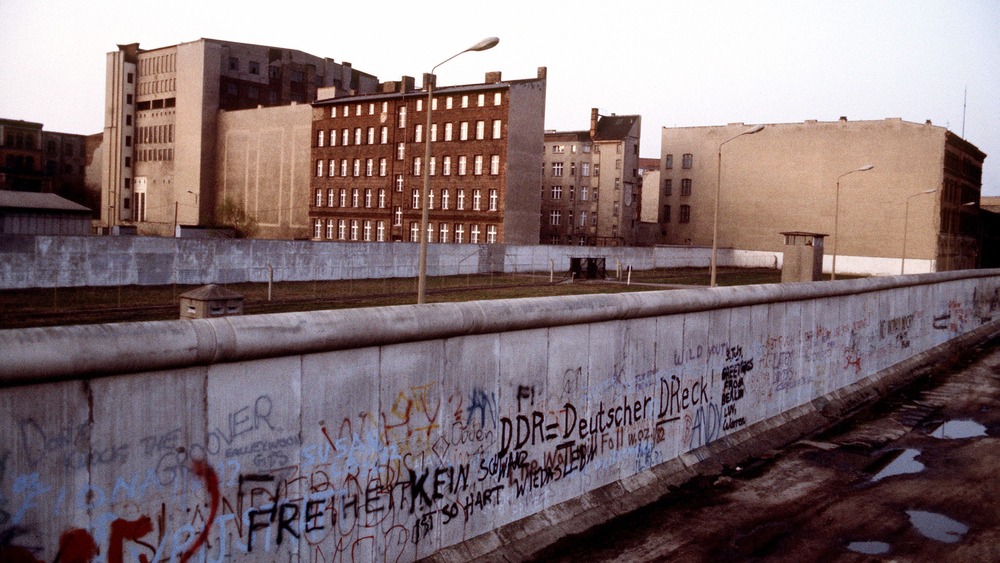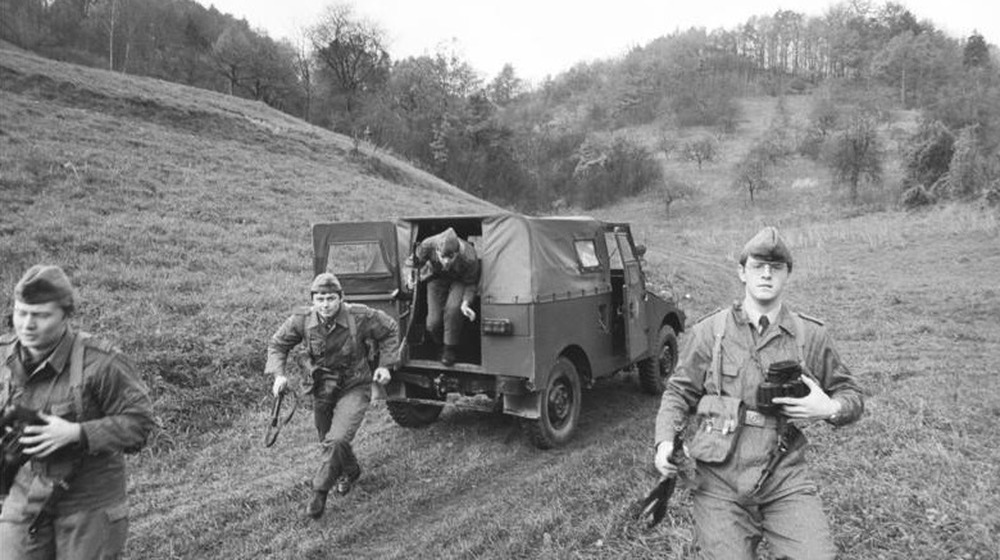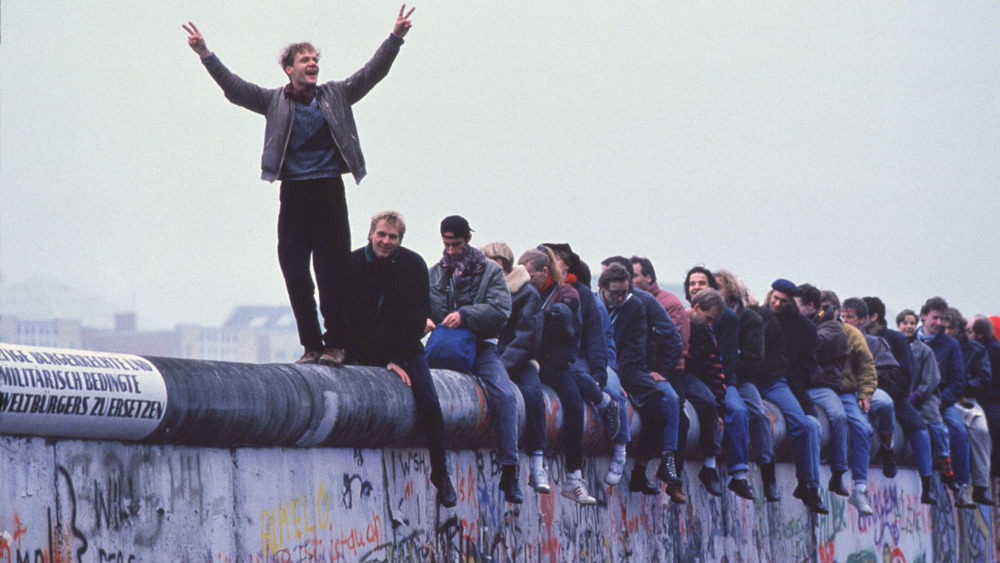A Look At The Dark Life Of A Berlin Wall Guard
By the summer of 1961, the communist leaders of East Germany realized they were suffering a serious brain drain from East Berlin. Their young and educated citizens were fleeing in droves from the Soviet-allied German Democratic Republic (GDR) for West Berlin — an enclave aligned with West Germany within the GDR (see a map via Deutsche Welle). But it wasn't just scientists, doctors, and other members of the wealthy class looking to escape the east; it was also the labor workforce — the backbone of East Germany's Cold War economy.
So, in the middle of the night on August 13, 1961, East German soldiers and workers laid down more than 30 miles of barbed wire fencing through the heart of Berlin, fortified with armed guards — all of it designed to keep East Germans from ever leaving their country. The day would be remembered as Barbed Wire Sunday, but within just a few days, the barbed wire was slowly replaced with concrete, commencing the construction of the Berlin Wall.
The massive Berlin Wall required brutal guards to enforce it
The Berlin Wall would eventually become nearly 100 miles long as it stretched well outside the city of Berlin and into the German countryside. And that massive stretch of wall required more than 7,000 East German soldiers to secure it, per The Local. Those border guards, known as the Grenztruppen (pictured above), manned 302 watchtowers and 20 bunkers. And they approached their jobs with a brutal callousness. The Grenztruppen had orders to shoot and kill their own people who were trying to escape the country. Thousands of East Germans were captured during attempted crossings. And if an escapee was wounded at the hands of a guard, razor wire, or an attack dog, the guards would simply watch them bleed out. Officially, 270 were killed, per Yahoo News, but some victims groups put the total at more than 1,000.
However, the brutality enforced by their superiors — and each other — often came at a high price for the Grenztruppen, too. At least 24 guards were killed on duty, according to the BBC. Nine of them were by East Germans fleeing the country, and eight were by fellow guards. The rest were by U.S. soldiers, civilians, and West German patrols. But the number of those who were killed on duty was significantly less than the 44 guards who died by suicide.
Some Berlin Wall guards wanted out, too
Not all of the Berlin Wall guards bought into dividing their people, and some were among the 5,000 East Germans who managed to escape. Others, as time wore on, realized the futility in attempting to maintain an order that was obviously failing. On November 9, 1989, East Berlin's Communist Party announced a change in the city's relations with the West. Starting at midnight, the party's spokesman said, citizens were free to cross the border (per History.com). Harald Jäger, a border guard in charge that evening, told Der Spiegel in 2009 (via the BBC) that he had watched the press conference and had trouble making sense of the rapid change.
Jäger frantically called his superiors, but they gave no definitive directions on how to handle the increasingly chaotic situation. It was up to him to either open the gates, or to open fire to stop the crowd from crossing the border. "People could have been injured or killed even without shots being fired, in scuffles, or if there had been panic among the thousands gathered at the border crossing," he told Der Spiegel. "That's why I gave my people the order: Open the barrier!"
That night, Germans on each side of the wall used hammers and picks to chip away at the Berlin Wall, while bulldozers tore down entire sections. On October 3, 1990, Germany reunification became official, marking what many consider to be the true end of the Cold War.


